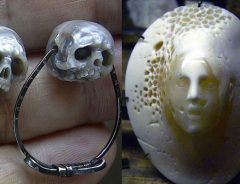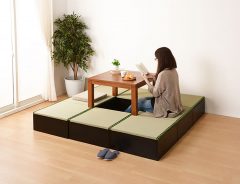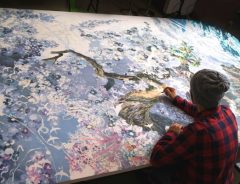
Source: © SocialWire Co., Ltd.
Tatami art recreates stunning images using traditional Japanese flooring material
- Tags:
- Art / flooring / Tatami / tatami art / tatami mat
Related Article
-

The Hauntingly Beautiful Skulls And Wearable Sculptures Of Shinji Nakaba
-

Eerie Monsters And Ghosts By One Of Japan’s Last Woodblock Printing Masters
-

Japanese Designers Stimulate Child Learning With Nameless Paint Sets
-

Tatami-za: Modular furniture lets you enjoy tatami reed flooring and storage in any home
-

Japan’s First Female Sento Artist Hopes To Revitalize Public Baths With Soothing Murals
-

Japanese Artist Reveals Magnificent Pen & Ink Drawing 3.5 Years In The Making


Tatami (畳) has been used in Japan from as early as the classical Nara period (710-794). They were traditionally made using rice straw, but in their modern form, tatami mats are made using layers of woven soft rush straw (also known as igusa straw). Their construction as a flooring material is meant specifically to complement the typical Japanese way of living, which means that it puts a lot more emphasis on comfort due to sitting and sleeping on the floor.
Even though tatami has been around for over a thousand years, they’re still used in plenty of houses and apartments all over Japan, proving that they’re not obsolete just yet. In fact, in recent years, there have even been efforts to adapt the material for more creative uses, and one of those uses involves creating beautiful images and patterns completely made out of tatami.
Kenji Yamada is the popular “tatami artist” behind this movement. He is the representative of a tatami specialty store located in Gifu Prefecture. His work has been covered by countless news outlets in Japan, and he’s been hired by temples and hotels in Japan to give their floors a touch of his magic. You can see some images of his past creations below, including an intricate dragon tatami and a recreation of Marilyn Monroe’s face.
© SocialWire Co., Ltd.
© SocialWire Co., Ltd.
© SocialWire Co., Ltd.
© SocialWire Co., Ltd.
This April, he’ll be participating in an art event to present the store’s “infinite tatami”, as another way to show how tatami can be used creatively. Contrary to the standardized rectangular shapes that tatami is usually sold under, infinite tatami is made as hexagonal pieces so that they can fit even in rooms that don’t follow a rectangular shape. The Marilyn Monroe tatami art featured above is an example they used to promote the product.
He also has a Youtube channel where he uploads some of his press appearances and a few ‘making of’ videos for how he creates his pieces. You can watch a short clip showing how he transformed the hexagonal pieces to recreate Marilyn Monroe’s face below, and another video with a more detailed ‘making of’ video for the circular floor patterns he created for the Kinosaki Onsen in Hyogo.
If you’re interested in seeing his infinite tatami firsthand, you can visit the art event that Kenji Yamada will be attending, which you can read more details of below.
Ranshō no Kai Art Event (濫觴の会)